Copenhagen airport shopping
Usual selection of stuff that is either illegal or unavailable in the US. Next stop: Greenland.
A posting every day; an interesting idea every three months…
Mostly these are written for friends and family.
Usual selection of stuff that is either illegal or unavailable in the US. Next stop: Greenland.



I’m praying for global warming to end… on September 11, on which date I hope to be stepping off the ship that I boarded this morning in Greenland (soon to be our 51st state? Atlantic says that citizens there consume roughly the same amount in aid from Denmark as Federal welfare $$ spent per resident of New Mexico, i.e., $10,000 per year per person).
Here’s our planned route (from Hurtigruten):

I will try to post a bit to Facebook and/or this blog, but Internet access may be tenuous. So that the site does not go dark, I’ve scheduled a bunch of non-topical postings to appear once/day.
Full post, including commentsAt a late June birthday party for one of my best 4-year-old friends, a fifth grader mentioned that she had just returned from a Carnival cruise from New York to Bermuda and back.
How was it?
“It got rough on the second day.”
Was anyone seasick?
“There was vomit everywhere,” she replied. “They didn’t have any bags, so people were throwing up on the floor, in the stairways. Everywhere.”
How about Bermuda itself?
“We were there for only 8 hours. The beach was nice.”
Related:
Dear Readers:
Because I like to do everything in the dumbest way imaginable, I will be visiting Washington, D.C. in July.
If you’d like to get together for coffee, perhaps Sunday afternoon, July 14, or Monday early(ish) morning, July 15, please email me (philg@mit.edu).
Venue will be the Conrad hotel near Chinatown.
(I would have preferred to meet at the Capital One café for Pride Month, but I fear that they may have removed their Pride decor (the issue is important enough to be focused on during June, but not for the rest of the year?):



)
Full post, including commentsPosted on Facebook under “Heard it might be a Boeing 737 MAX on way back from Ireland so decided to take a ship for safety.”:

Could this be the world’s most lavish museum devoted to engineering failure? The science turned out not to be settled, unfortunately. Folks in Belfast do like to point out “She was alright when she left here.”


The museum does disclose how badly the first voyage turned out for most people on board:
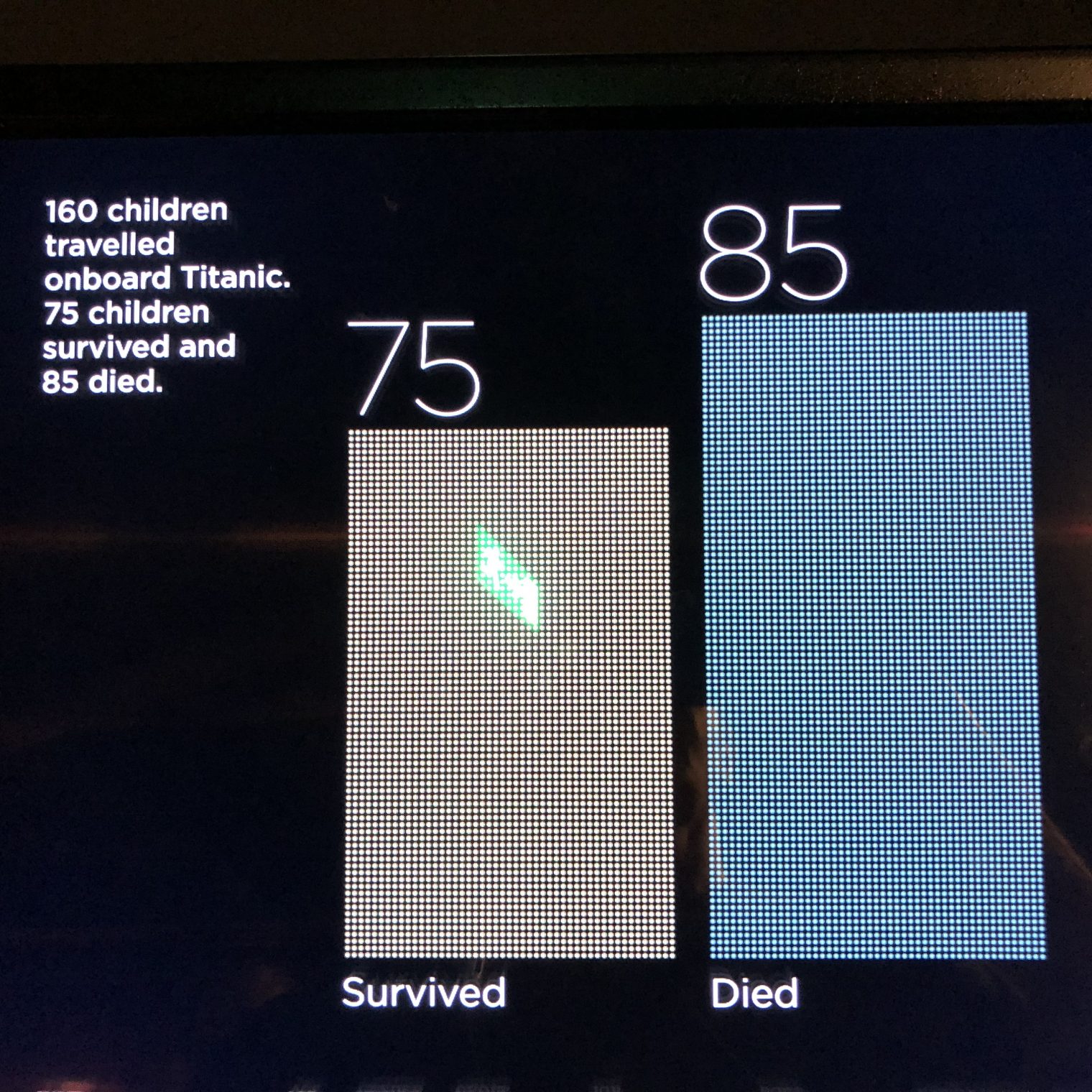
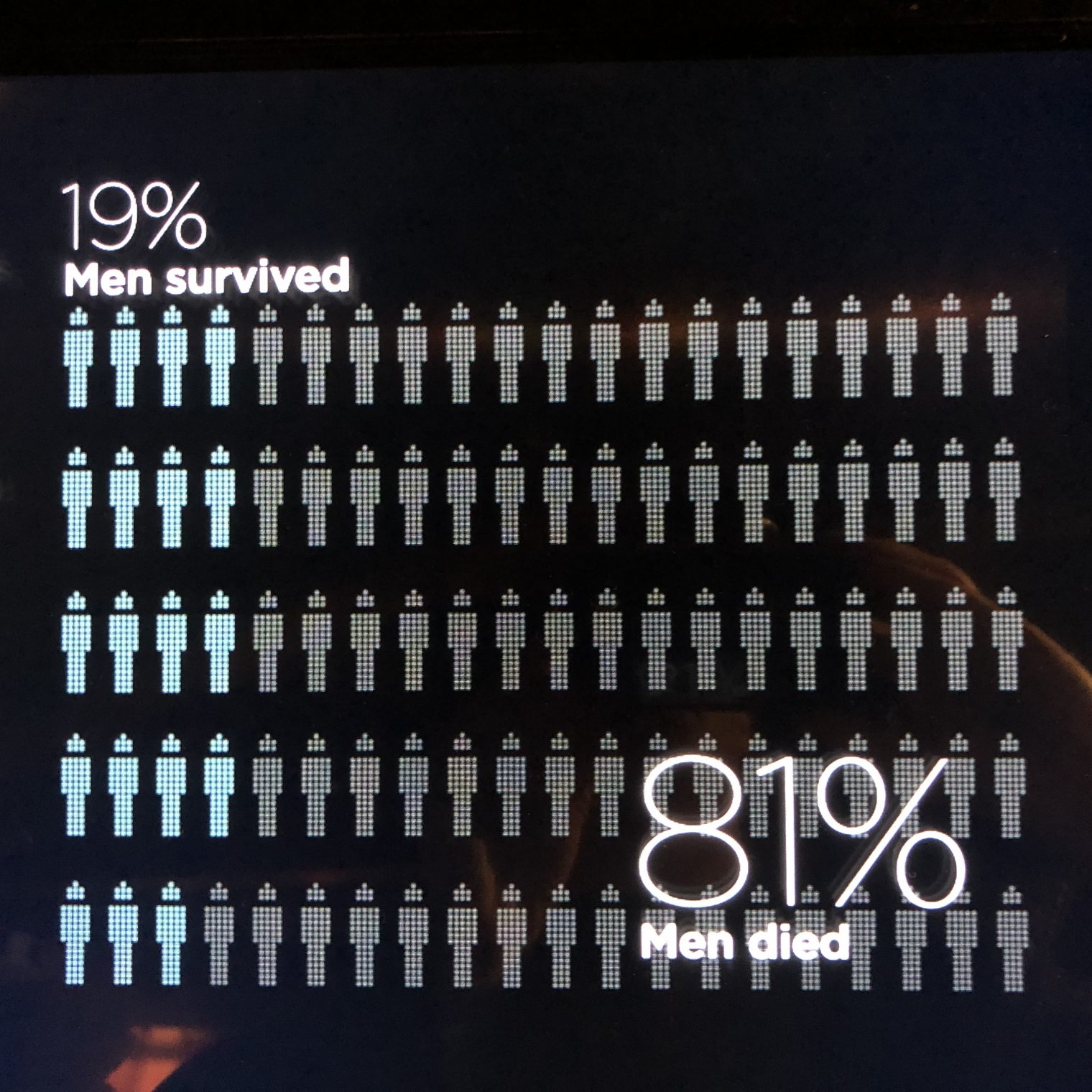
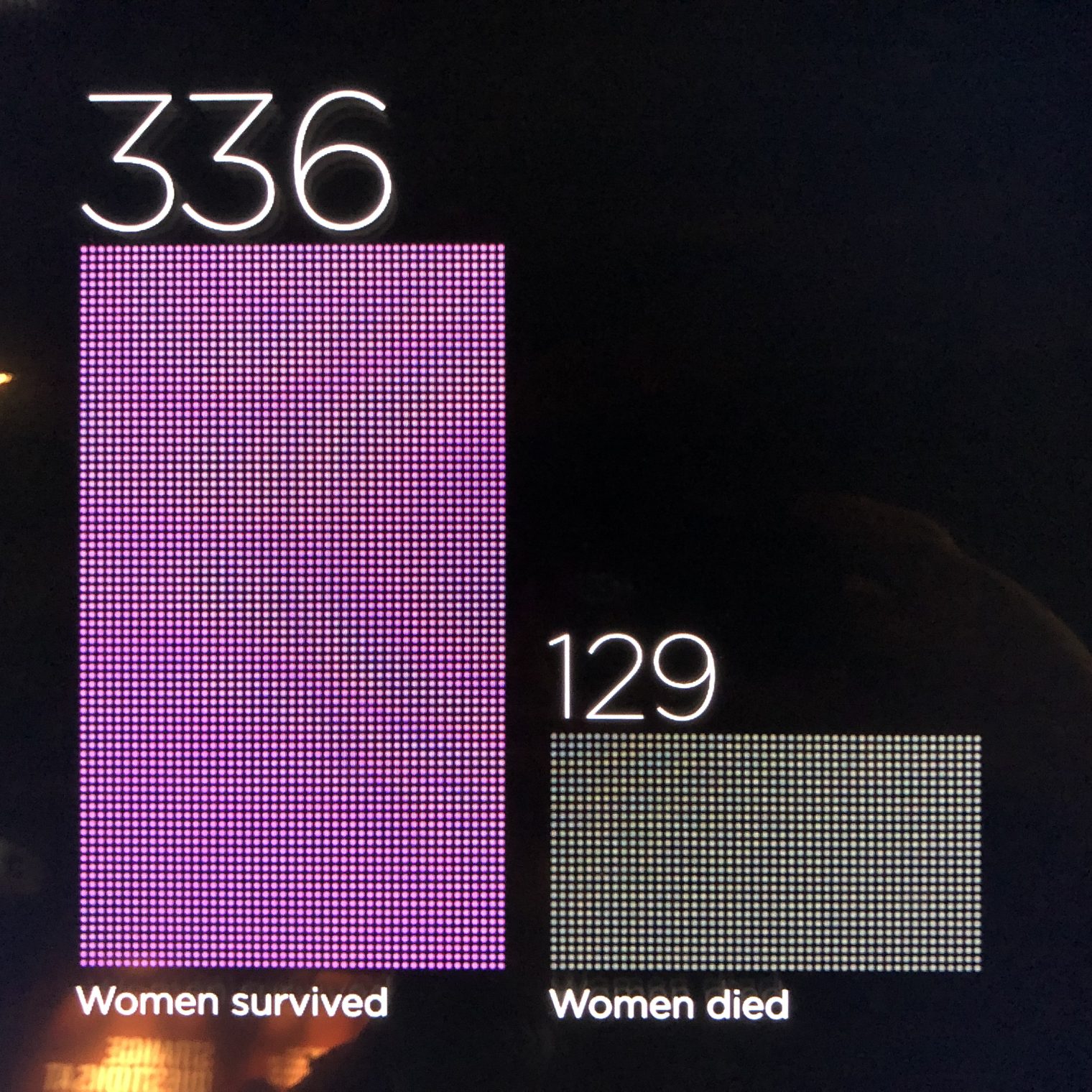
This was despite substantial government regulation:

Also despite the latest in wireless communication technology:
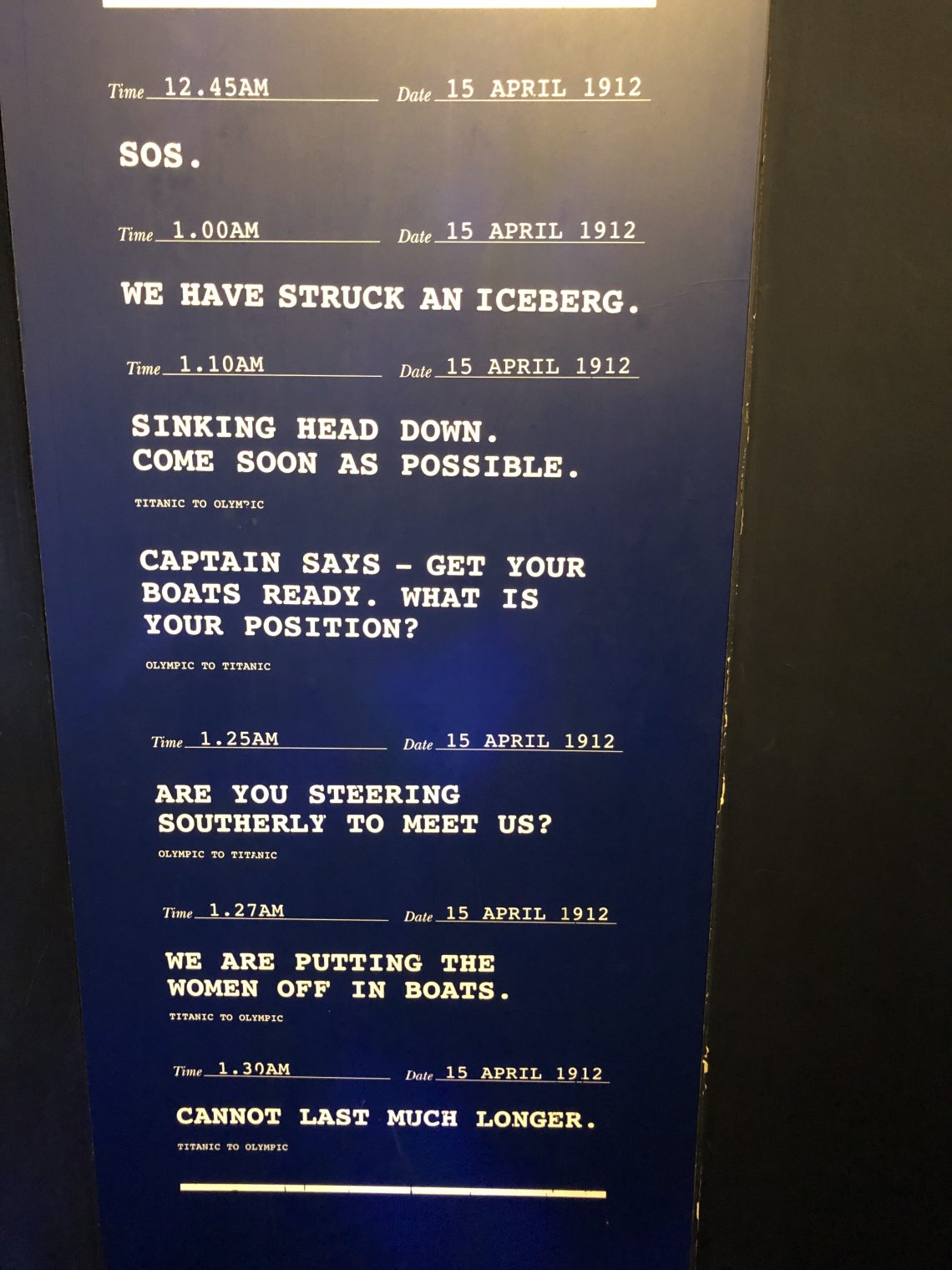
Yet the skill of management, engineers, and workers is celebrated:
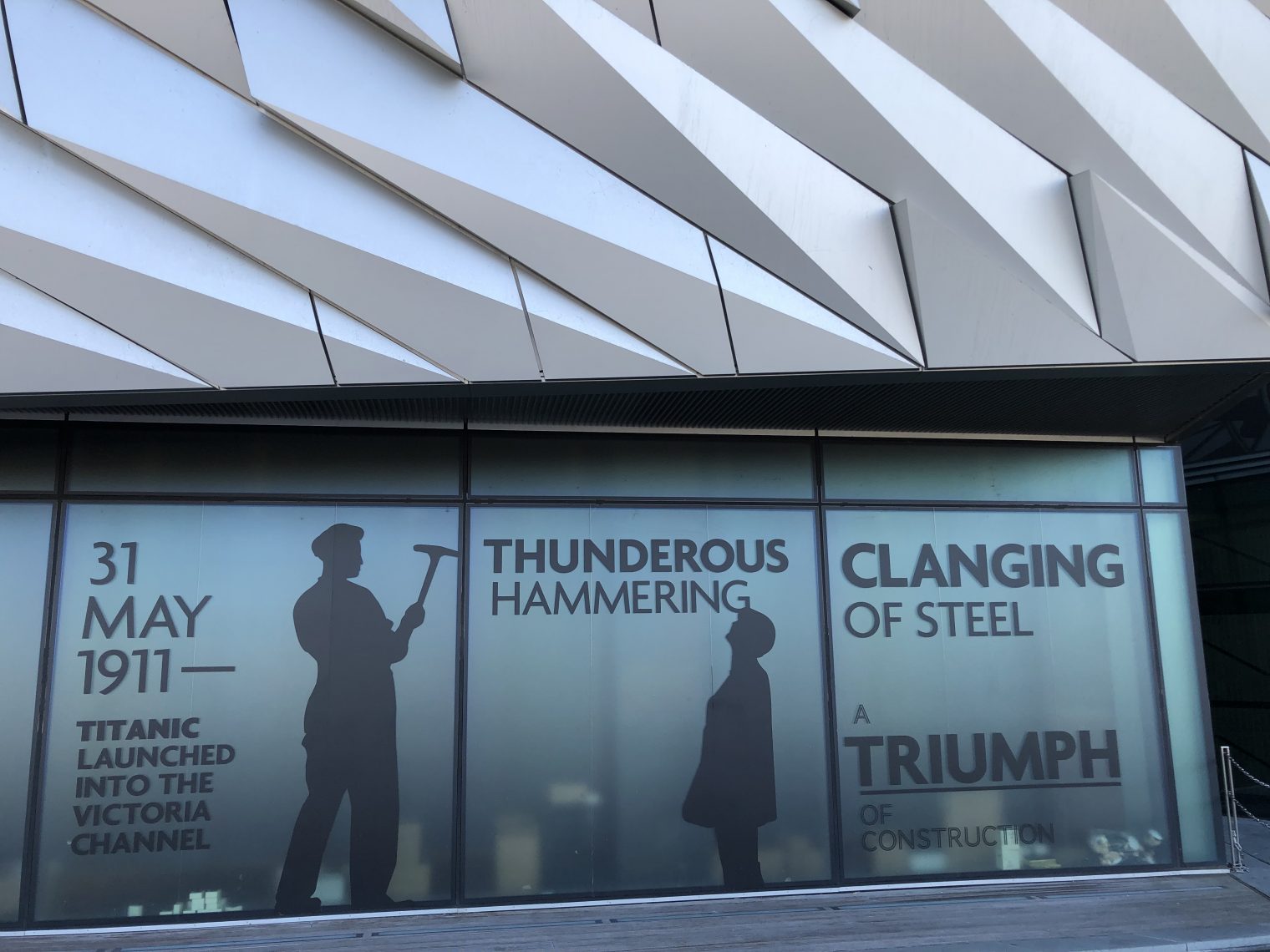
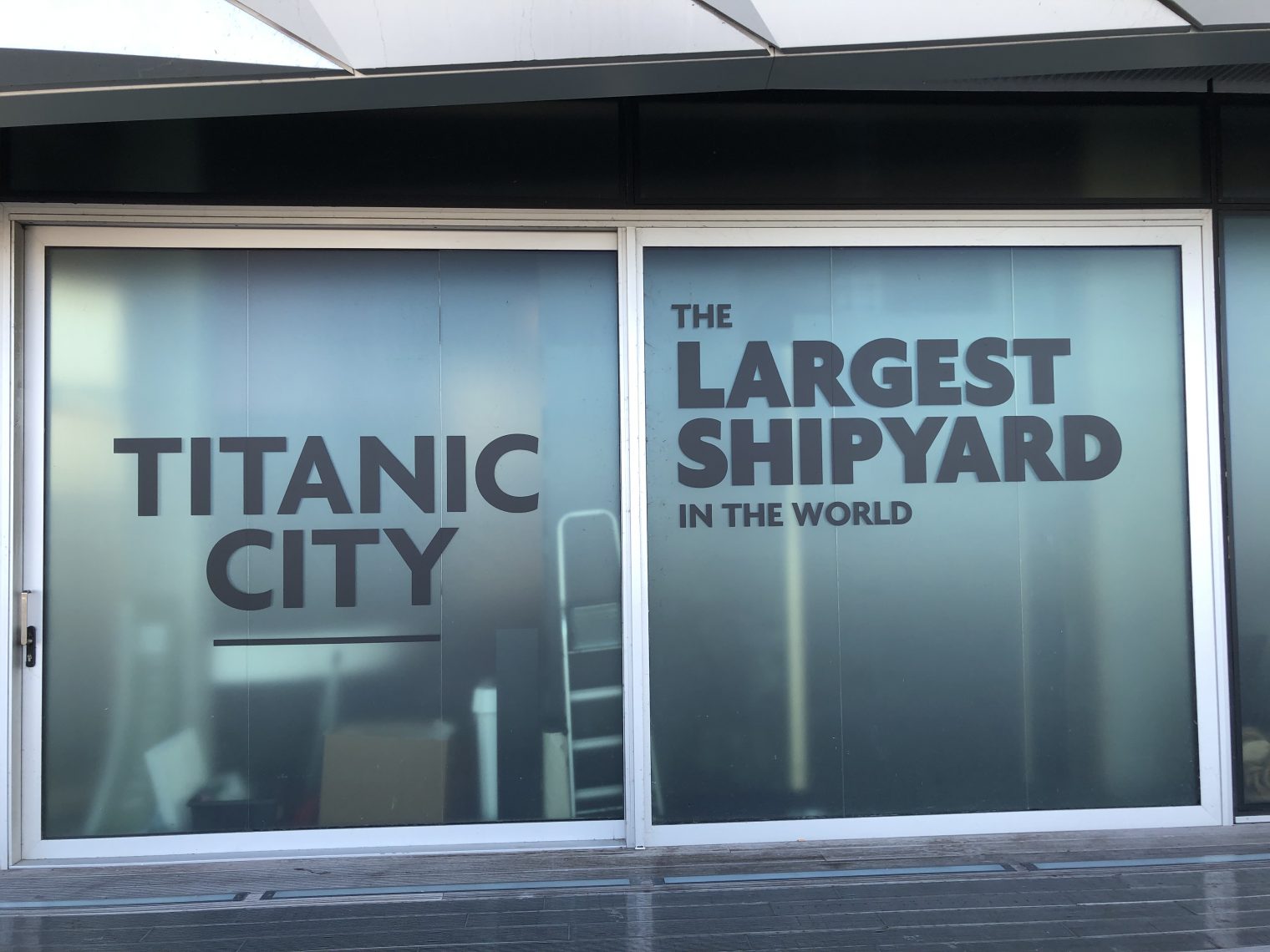
Is it a bad thing when a country goes from being a world industrial leader to irrelevant compared to South Korea, China, and Japan? Barack Obama says “No problemo:”

Passengers were arbitrarily divided into only two genders:

Not every movie about the Titanic is an unimaginative derivative:
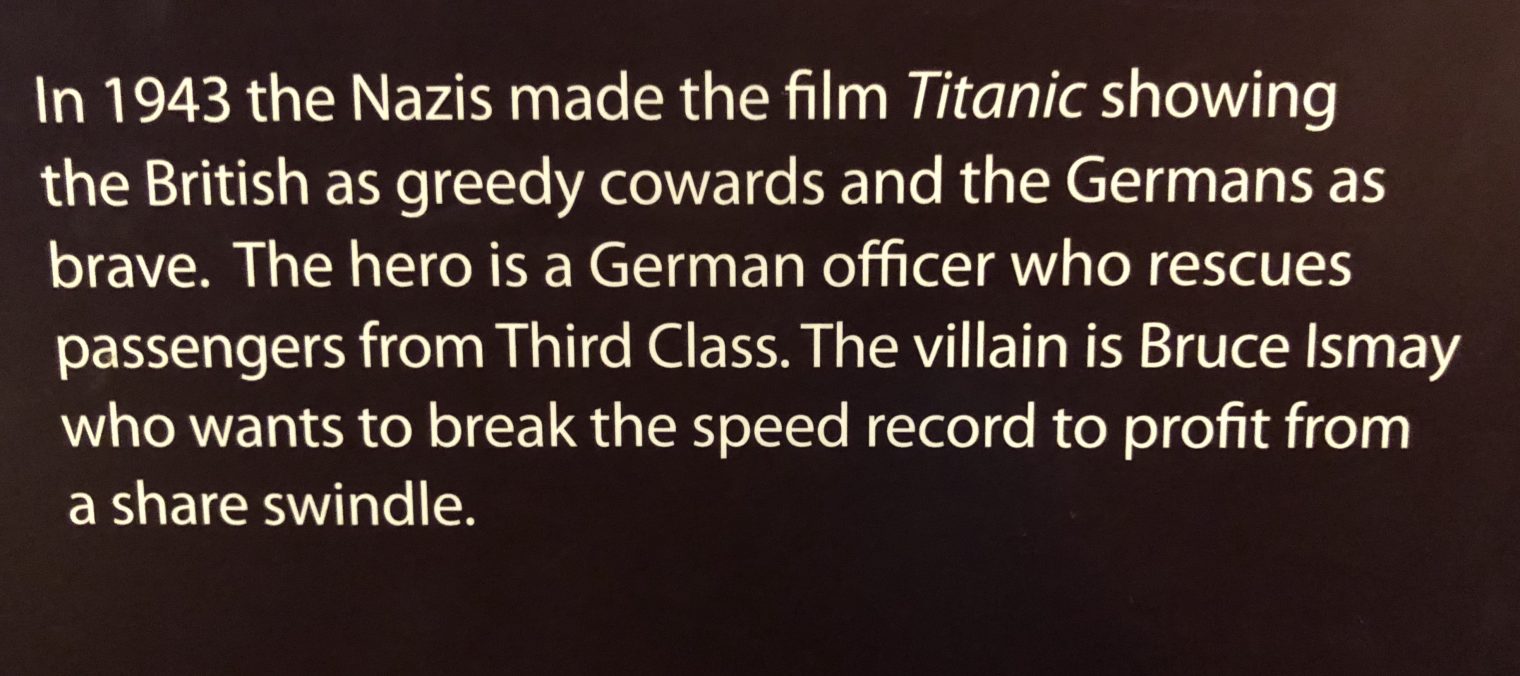
Then, as now, the migration industry was highly profitable for some…
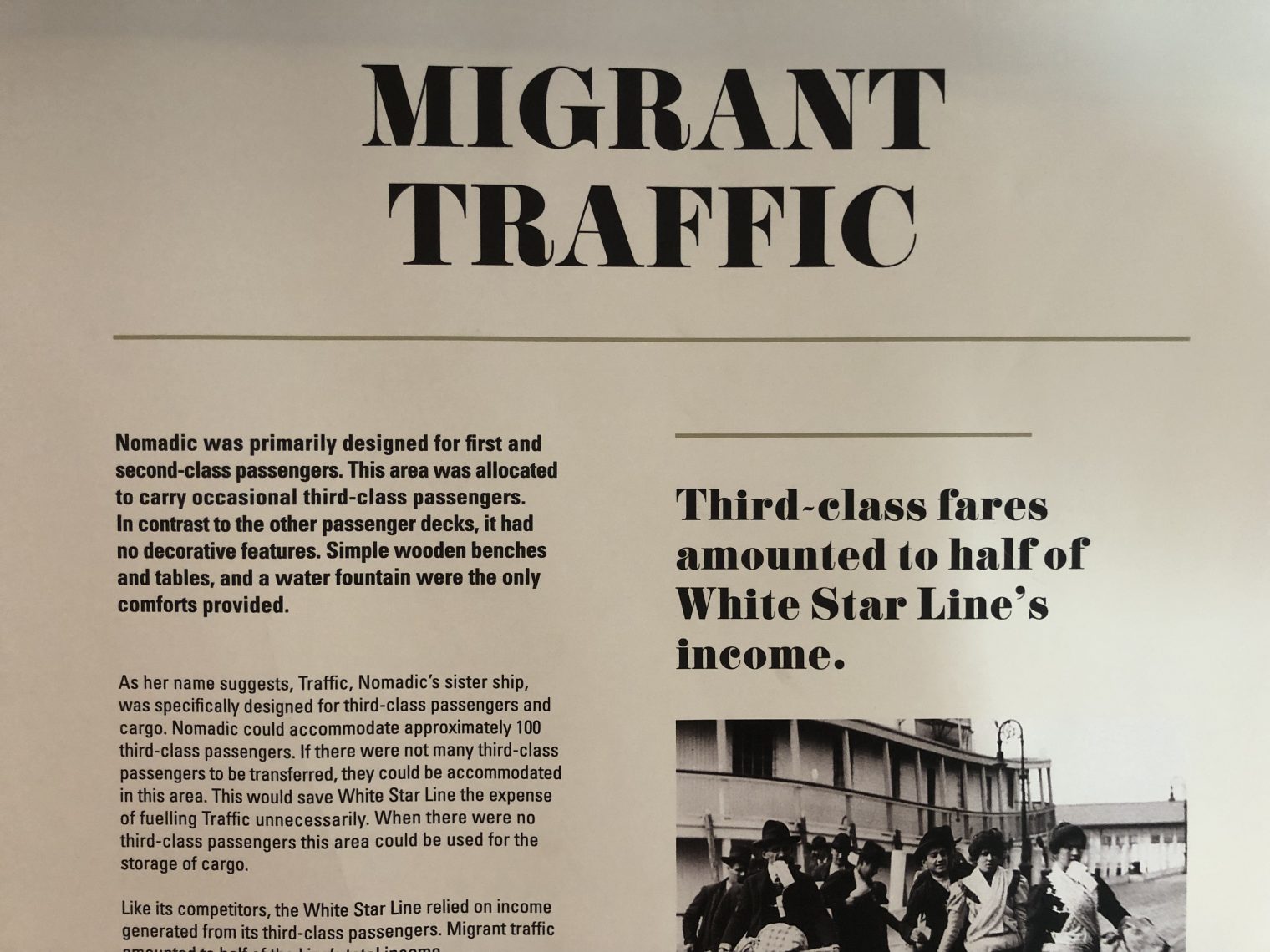
A reminder to be humble…

… considering that the best humans could do lasted less than two weeks against Nature. From notes typed up by a shipyard office worker:
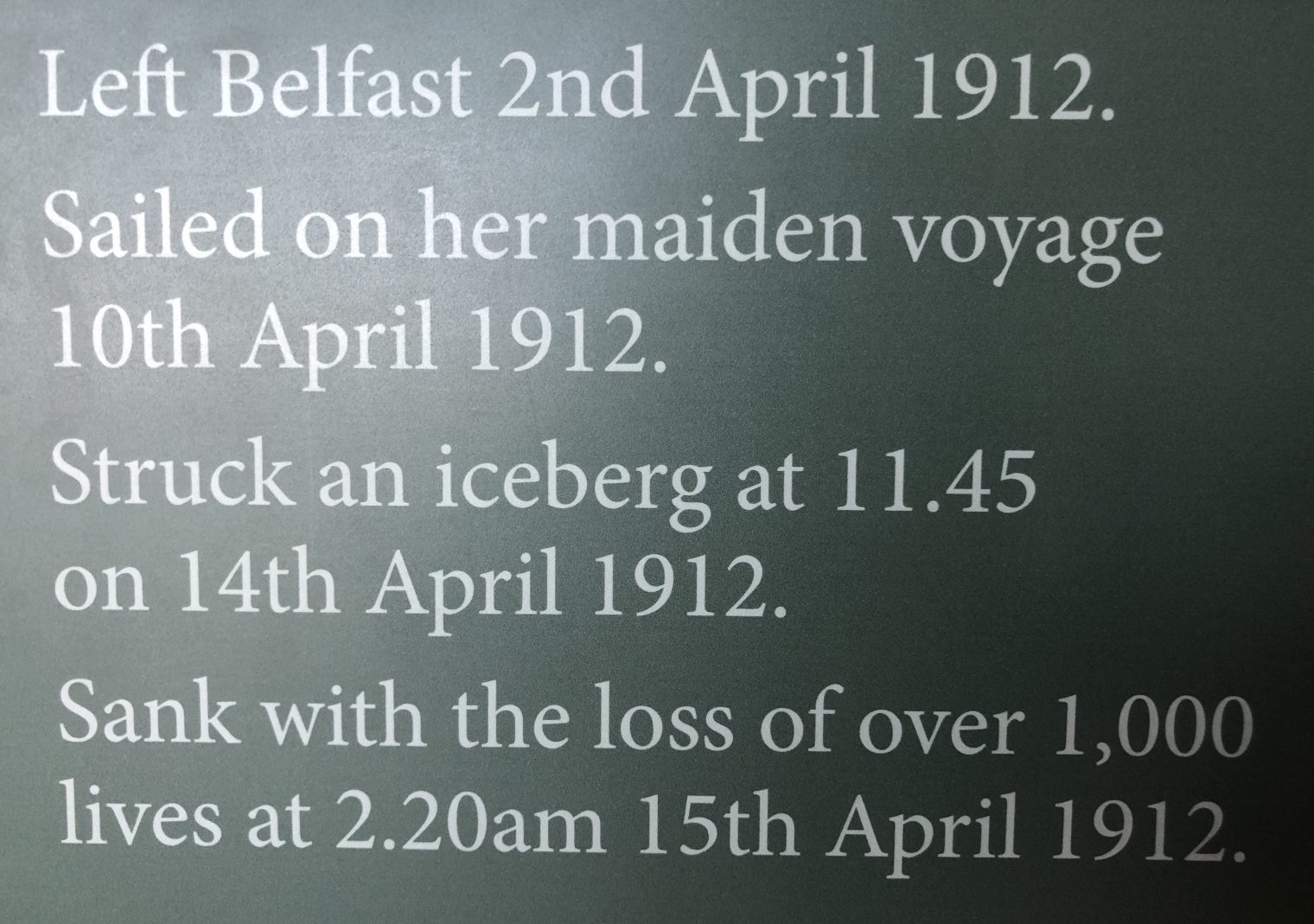
The building is a beautiful work of engineering in itself and includes a gratuitous Disney-style ride:
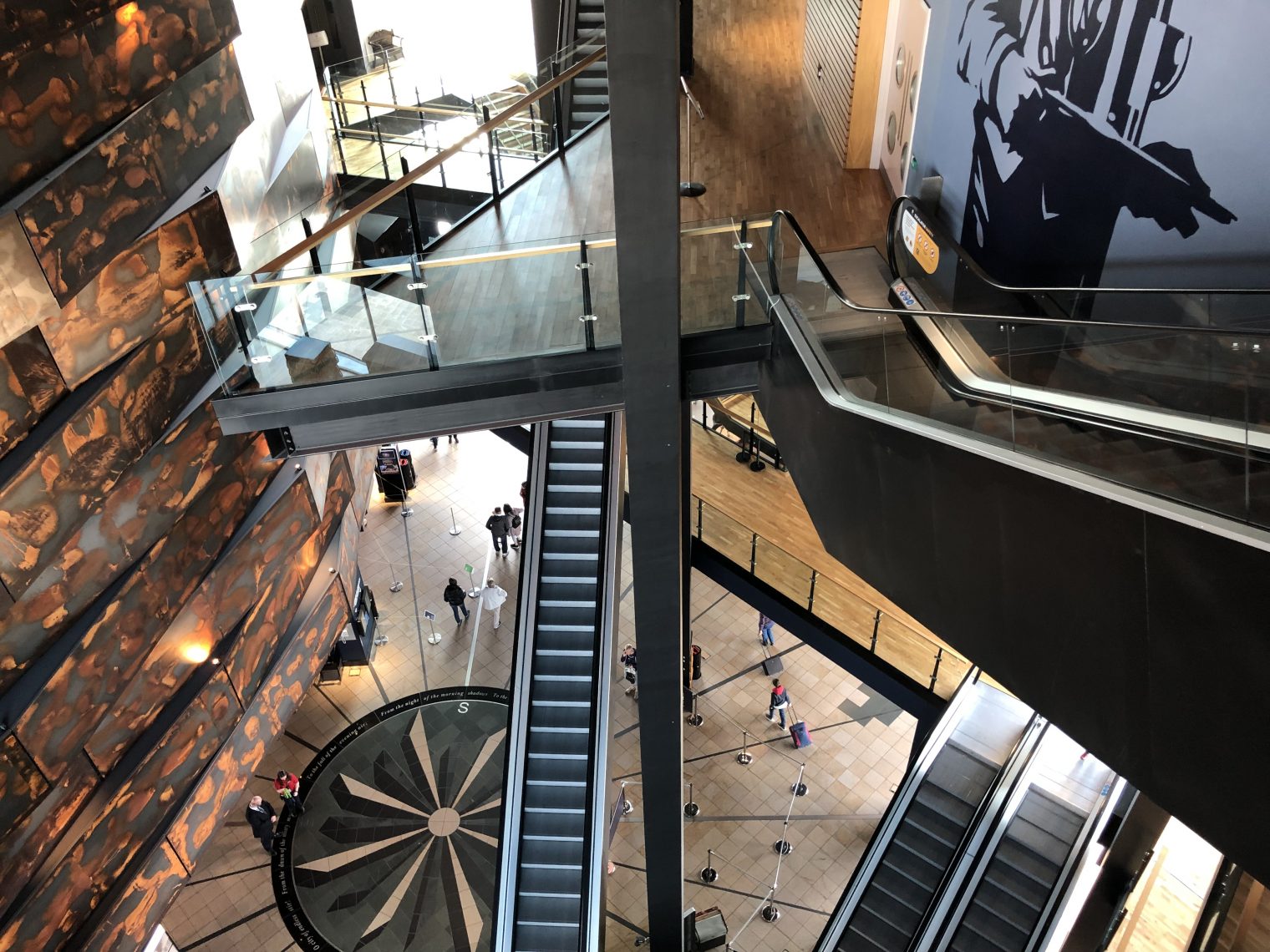
More: Visit Titanic Belfast
Full post, including commentsSupposedly, the cost of a Disney World ticket has gone up roughly 3.5X, adjusted for inflation, since 1971 (chart).
During a March 30-31, 2019 visit, however, the parks were so jammed that waiting times for popular rides were 90-150 minutes. Using the Disney World app, it was impossible to obtain a same-day FastPass for any of the popular rides. “They’re all sold out at least 30 days in advance,” said a Florida resident season pass holder. “People who are staying in a Disney hotel are able to book them 60 or 90 days ahead.”
I went with a friend who paid up for a Disney VIP guide. He told us that we weren’t seeing a particularly busy day. “The wait times can be 300 minutes on the busiest days.” How crowded would the main streets be? “You won’t see any pavement.” Was the park more crowded because we were there on a weekend? “There isn’t much difference between weekends and weekdays.”
Go early in the morning during the “Extra Magic” hours when only people staying in Disney hotels are allowed in? The line for the roller coaster in Toy Story Land stretched to more than two hours before the park had even opened to the general public. People who said that they got in line at 8:02 am (park opened at 8) were only about halfway through the line at 8:40.
Go in the evening after the kids have collapsed? The app showed that the wait time for the Avatar sim ride was 95 minutes… at 9:58 pm, just before Animal Kingdom closed for the night. Apparently people who are already in line when the park officially closes will get to ride, but only at 11:35 pm after enduring more than 1.5 hours standing in line.

With the guide we were able to get into the FastPass line at every ride, cut through side doors for a few rides, and cut the line for portraits with princesses and other characters. The resulting wait time for rides was about the same as during my 1991 trip to Disneyland, but the overall experience was inferior because the non-rides portions of the park were so crowded that it was tough to appreciate the atmosphere or architectural details. Want to get food or drink? Wait in a 10-minute line at a kiosk or a 1-hour line at an unpopular restaurant.
The guides cost $500 per hour and can tow up to 10 guests around, so figure this adds $320/day per person if the guide is hired for 8 hours per day and there are 8 people assembled in the group. Tickets in 1989 were roughly $60 per day in current dollars (source). With a VIP guide the experience is comparable overall. The wait times for the rides are similar while the rides have gotten better from a technical point of view. Meandering around the park, trying to get a meal, etc., has become far less enjoyable. Let’s say that these pluses and minuses average out. To have a basically comparable experience today, therefore, costs $109 for the park ticket plus $320 for a 1/8th share of a VIP guide = $429 per day per person. That’s 7X the 1989 price.
Plainly the mobs are buying a lot of hotel rooms, food, and souvenirs. But I wonder why Disney doesn’t have “Crowd-hater Days” in each park to capture the market of people who would be willing to pay a lot more to have the 1990s experience. There are four core parks within Disney World. Why not say that every Monday through Thursday one of these parks will be designated “Crowd-hater” and tickets will be sold at whatever price it takes to keep max line length down to 15 minutes? If ticket prices were doubled, for example, I think Disney would actually make more money in ticket revenue since demand should not be cut by more than 50 percent. By using a high price to limit admission to only one park at a time they should still be able to keep all of their hotels filled (tourists who don’t value the less-crowded experience will still go to the other core parks and/or the water parks).
Topiary from the Epcot garden event:
Travel tip: The Swan and Dolphin hotels are run by a competent hotel chain (Westin/Marriott) and are still technically “on property”. Here’s the view from our $215/night balcony room (rates are cheap if they can’t fill these monster hotels with a convention). It is a 20-minute walk to Hollywood Studios or 30 minutes to the center of Epcot. The boat service is loud and slow and was ultimately rejected by my 9-year-old companion. (She wondered why can’t they use battery-powered boats? They are never far from a charger.)
The most outdated structure in all of Disney (Nikon “Darkroom”):
Fair and balanced: Disney gives equal weight to Donald Trump’s favorite restaurant and Elizabeth Warren’s ancestral home.
Three years after a child was killed by an alligator, Disney still doesn’t have signs clearly explaining or depicting the hazard (there is a sign, but a non-Floridian might infer that the lake-related hazard was drowning and could be addressed by watching children):
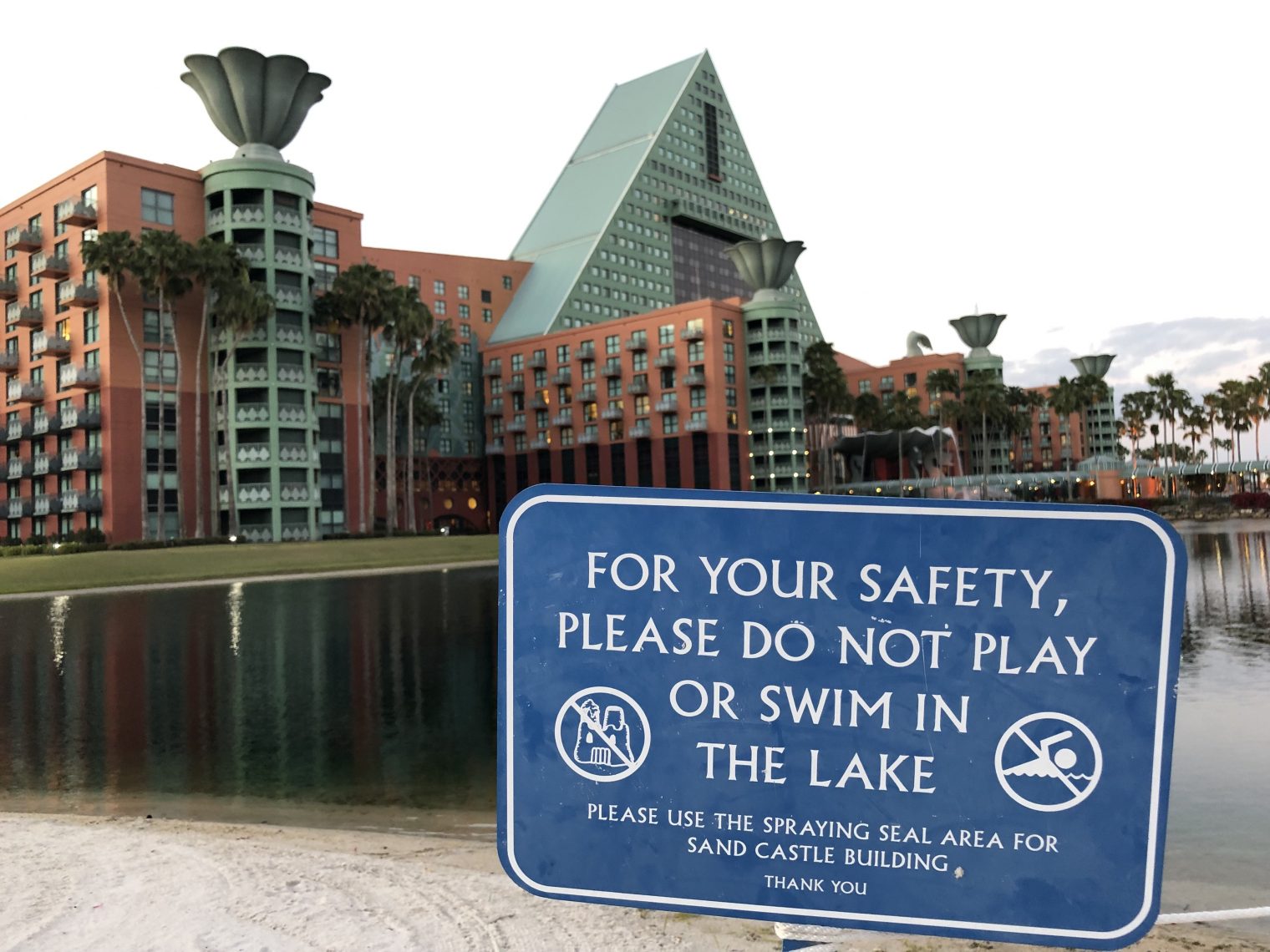
(See “Disney knew its property had alligators. It caught hundreds before a boy was killed.” (Washington Post))
Readers: Is the Times Square-level of crowding something that should prompt Disney to change its pricing? Or do young people expect to stand in line for hours to get anything good?
Full post, including commentsThis review is based on a December 9-17, 2018 trip from Miami to Havana, Cienfuegos, Grand Cayman, and Labadee, Haiti.
See https://philip.greenspun.com/blog/2019/01/03/cuba-tourism-cruise-ship-versus-hotels/ for some thoughts about seeing Cuba by ship versus land tours.
By virtue of having qualified as U.S. government-authorized providers of “people to people” tours, the cruise lines are able to operate in Cuba legally. Due to their scale and efficiency (world labor market!), the result is far cheaper than what land-based tour companies are able to offer. The basic rooms-with-windows on Empress of the Seas for our departure were going for less than $800 per person ($100/day) including all fees.
Empress of the Seas is the smallest and oldest ship in the Royal Caribbean inventory. Wikipedia says that she was launched in 1989 and holds 1,840 passengers. Piers in most Cuban ports circa 2018 were not capable of handling larger ships, which is why this smaller and less profitable ship was in use (see https://philip.greenspun.com/blog/2018/12/26/cruise-o-nomics/).
The basic cabins on Empress are truly closet-sized. We paid $3,070 for a “suite” that is more like the size of an ordinary “room” on a new ship. The bathroom was tiny (way too small for a tub, for example). It was worth it for the balcony. We spent another $2,000 or so on shore excursions, Internet connectivity (intermittent and sometimes slow), drinks (not on the unlimited “alcohol misuse disorder” plan!), etc.
The crew likes to surprise passengers with decoration:
Shore excursions typically entailed 1-1.25 hours of “line up and wait” before we were actually on a tour bus and headed to the first destination. Passengers are called to the theater, check in with their tour tickets, are assigned number/sticker, and then wait for 45 minutes until the number is called. The guided tour of Havana was interesting and the guide spoke excellent English. The tour in Cienfuegos was struggling for reasons to exist, on the other hand, and our guide struggled with English and organization. We did enjoy the botanical garden, but it would have made more sense just to walk around the UNESCO World Heritage downtown on our own (may not be legal, technically, but there are no practical barriers to doing this; passengers self-certify that they will buy an organized tour of some kind, but there is no enforcement). Cienfuegos receives many fewer tourists and therefore has many fewer people hustling to make a buck off tourists. This makes it a more relaxing environment for sightseers than Havana.
Grand Cayman has the strip malls and traffic jams of Greater Miami, but without the art, architecture, culture, and music. The local museum is interesting (the history of the Caymans is mostly the history of killing all of the sea turtles) and Seven Mile Beach is a nice walk and perfect for swimming. Snorkeling and Sting Ray City strips were canceled the day that we were there due to several days of high winds and associated heavy surf.





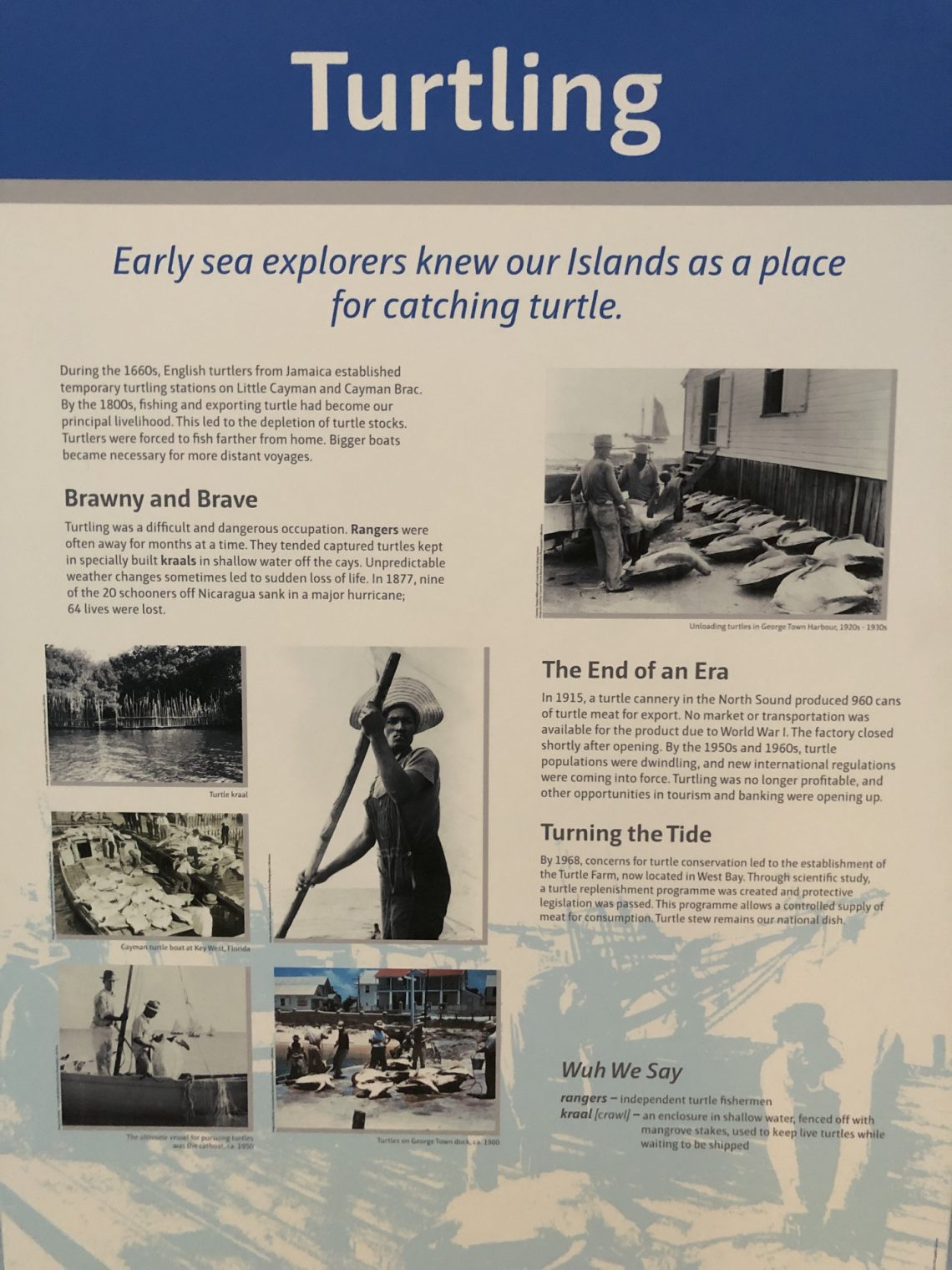





It was nice to see a strip mall sign feature the Chabad center next to a tattoo and piercing parlor (see “Why Does Judaism Forbid Tattoos?” on the Chabad.org site). However, I would be much more enthusiastic about returning to Cuba than going back to Grand Cayman. (Luca, on the beach inside the Caribbean Club hotel, was a great place to hang out for a long lunch and swim before or after.)
We loved Labadee, Haiti and I wrote about it separately in https://philip.greenspun.com/blog/2019/01/21/labadee-port-guide/
Out of our 7 full days on the ship, 3 of them were spent entirely at sea. Cruise lines love sea days because they pay no port fees and collect revenue from their shops and casinos, which cannot be operated except when in international waters. I got a high-quality reasonably-priced haircut on one of the sea days and managed to get in 10,000+ steps/day walking around the promenade deck.
The Serenade of the Seas (see my Baltic cruise review) had a beautiful spacious gym with wonderful sea views. Unfortunately, the Empress of the Seas has a small gym that feels like an afterthought. It is tucked up in a balcony above a lounge/bar.
As on Serenade of the Seas, the kitchen cannot make a donut, roll, or loaf of bread with anywhere near the competence of an average American supermarket. I ended up eating no bread for the entire journey and came back having lost a pound or two. Coffee is not up to the usual Dunkin Donuts or Starbucks drip standard. Food in the main dining room is mediocre. The specialty steak house food was excellent, as was the service and the ambiance. As described in https://philip.greenspun.com/blog/2019/01/01/new-years-wish-national-and-global-unity-via-more-cruise-ships/ the lack of assigned seating in the main dining room led to a lot of interesting mixing among passengers. Royal Caribbean’s main strength seems to be HR. Nearly all of the staff were friendly and seemed happy to be helping tourists enjoy their vacations. The restaurant folks were strong on hospitality and presentation.
The bridge tour was awesome. Maybe it would have been better if one passenger hadn’t asked whether a screen was dedicated to avoiding collisions with U.S. Navy vessels…
On-board entertainment was at least pretty good on about half the nights, though you have to like pop, ballroom, and Broadway. Olga played the piano for us in the dining room:

Security screening never caused a delay of more than 2 minutes and usually less. At Cienfuegos we got in and out of the port via the ship’s tenders, of which there are two. This resulted in a 20-minute line to get back on board. At Grand Cayman we used 200-person tenders run by the port itself, but they didn’t go very often. I got to the tender about 40 minutes before the “last call for a tender” time and ended up sitting on the tender for 40 minutes before it cast off. (First two photos below show one of the ship’s tenders in Cienfuegos and also that you want to be reincarnated as the Purell salesperson for the Royal Caribbean account. Second two are from Grand Cayman and show the port’s tenders.)
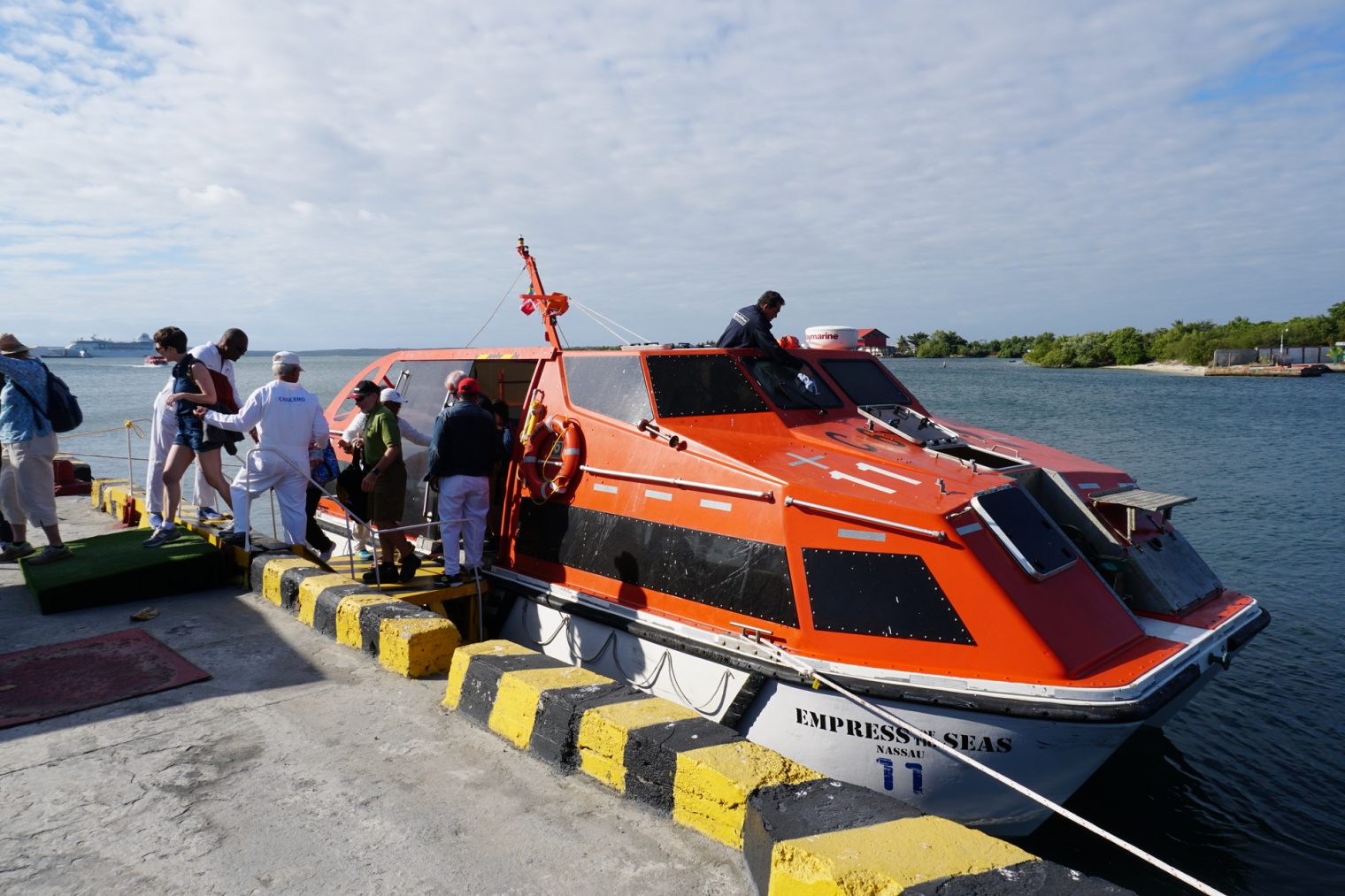
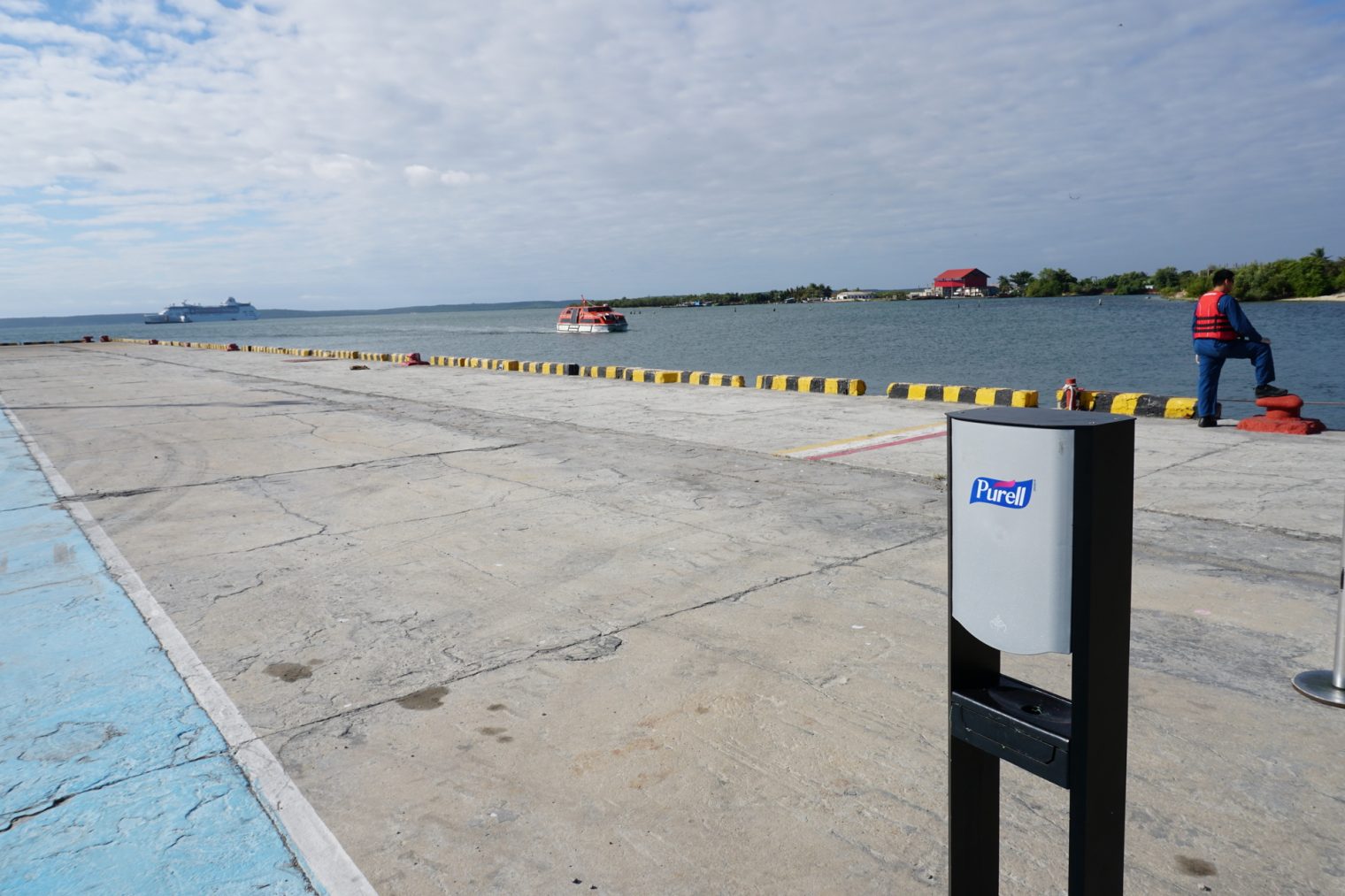
Returning to Miami involved 45 minutes of “hurry up and wait” followed by an astonishing U.S. Immigration and Customs experience. Having come from Cuba and Grand Cayman, potentially with suitcases stuffed full of contraband materials, we merely showed our passports to a smiling officer and then walked out to the pier.
Recommended hotel in Miami: Hyatt Centric, South Beach.

Recommended art museum in South Beach: Wolfsonian, for its Art Deco collection.
(Before deciding to abuse shareholders with looting via stock options and decades of stagnation in stock price, GE sold light bulbs to honor Ahura Mazda, the God of Zoroastrianism!)
Summary: It was a great trip, a good value, and a nice introduction to Cuba.
Related:
I was buried in work yesterday so missed the news about the shooting in New Zealand.
I was there only once, back in 1993 (my travelogue and photos), and it seemed decades removed from any of the world’s disputes. The population was 3.5 million back then (about 5 million today), fewer than the greater Boston area. In a lot of places there were only two kinds of cheese available. I met a 21-year-old who had never seen a U.S. dollar bill.
Readers: Who else wants to share a fond memory of the country?
Full post, including commentsIf you love Antarctica stories and airplanes, Antarctica’s Lost Aviator: The Epic Adventure to Explore the Last Frontier on Earth is the book for you. Lincoln Ellsworth, whom the author says would be a multi-billionaire if his fortune at the time were adjusted to today’s mini-dollars, spent years organizing a flight across the continent and finally succeeded in 1935. He decided to become a polar explorer at age 44.
How had things gone for the world’s greatest polar explorer?
Roald Amundsen had devoted his life to polar exploration, and by 1924 it had left him bankrupt and bitter.
In truth, Amundsen’s biggest mistake was that he had won. A small team of hardy and hardened men from Norway, with experience and careful planning, had upstaged the ambitions of the proud and mighty British Empire and the Empire did not like it. Burdened by debt, made weightier by accusations of cheating, Amundsen again sought refuge on the ice, but his plans were interrupted by World War I. After the war, he made an attempt to sail the Northeast Passage, before deciding his future was in the sky. He gained a pilot’s license and resolved to fly to the North Pole and across the Arctic Ocean. He took an obsolete plane to Wainwright, Canada, but crashed it landing on rough ground. Amundsen reasoned that what he really needed was a plane that could take off and land on water or ice: a flying boat. The best available at the time were the Italian-built Dornier Wal flying boats. But how to pay for them? Amundsen was forced to turn to the only way he knew to raise money: touring and lecturing. The money was in America, so that’s where he went. Thus, in October 1924, Roald Amundsen was holed up in New York’s Waldorf Astoria Hotel, refusing to accept visitors lest they be creditors and “nearer to black despair than ever before,” on a tour that, “was practically a financial failure”:
Amundsen, Ellsworth, and some well-qualified pilots and mechanics of the day did head up towards the North Pole in two German-designed Italian-built Dornier Wal seaplanes (two 350 hp engines). Mechanical issues prevent them from reaching the Pole, however. They have better luck in an airship, making it from Svalbard to Alaska via the North Pole in 1926 (story).
What were prices like in the early 1930s?
Bernt Balchen agreed to be the pilot [of a trans-Antarctic flight in a Northrop Gamma] if he was paid $800 a month plus his expenses, for the length of the expedition. For a successful flight across Antarctica he would receive a $14,700 bonus. It was a lucrative contract at a time when professionals, such as doctors, were earning $60 per week and production workers were lucky to manage $17.
Women today are generally prevented from taking flying lessons. A T-shirt from a flight school in Bentonville, Arkansas

Back in the 1930s, however, men were not sufficiently organized to exclude women from aviation:
While at Mittelholzer’s airfield, the fifty-two-year-old Ellsworth met Mary Louise Ulmer, a fellow American, twenty-five years his junior, who was taking flying lessons. Ulmer was the daughter of an industrialist, Jacob Ulmer (who had died in 1928) and Eldora, who was fulfilling her duty as the wealthy, idle socialite mother of a plain, awkward, and painfully shy daughter. Eldora was dragging her child around Europe in the hope of finding a suitable husband. When Ellsworth and Mary Louise met at Mittelholzer’s airfield, Eldora instantly knew she had hit the jackpot. Ellsworth was older, equally shy, and, she may have suspected from his bachelor status, gay. But he had two qualities that made him an ideal son-in-law: he was incredibly wealthy and he was well practiced in doing what he was told. … ten days after they met, Ellsworth proposed marriage to Mary Louise.
Having succeeded in her safari to the continent to hunt down a husband for her daughter, Eldora’s next task was to return to America to display the trophy. Any fleeting attention Ellsworth might have given to his polar expedition was redirected to surviving the less forgiving environment of a society wedding.
By 1930, Antarctica was still 90 percent unknown. Maybe this is because explorers were usually too plastered to make maps?
Ellsworth also sent on board forty bottles of whisky for his personal consumption, in addition to the whisky and beer taken on board for the crew.
The expedition leader had some reasons to drink:
[Hubert] Wilkins tried to make sense of his life and plan what he should do next. He had no money and was living on the small salary that Ellsworth was paying him to take care of the Wyatt Earp. He felt that his debt—moral or financial—had been repaid. He had organized the expedition and got everything successfully to the Ross Ice Shelf, until circumstances beyond his control had brought the whole affair to a premature end. He was alone and lonely; famous for a failed submarine expedition to the North Pole, while living in hotels at the bottom of the world, touring country towns and showing his films for a little extra cash. … On the personal front, Wilkins had not seen his wife in two years and was conscious that she was dating other men. He had married Suzanne Bennett, an Australian-born chorus girl working in New York, shortly after he was knighted. It was a whirlwind romance, consummated at a heady time in Wilkins’s life. It was soon apparent to Wilkins that Suzanne’s main motivation in attaching herself to the famous explorer was to gain the title Lady Wilkins, then put it to use to elevate her career from chorus girl to movie star. (A strategy that was spectacularly unsuccessful.) Wilkins constantly wrote Suzanne long letters expressing his love, but she rarely replied, and when she did it was usually only to taunt him about his lack of success, his age, or the fact he was going bald.
(The wife later writes to him saying that she is pregnant.) He dispenses life advice to the crew: “Remember, Magnus, you will never gain anything without personal wealth, or government backing.”
The Southern ocean was not any better behaved back then
The Wyatt Earp had a rough trip south. In heavy weather it would roll fifty degrees to each side. From being heeled over to port, rolling though one hundred degrees to starboard, then back to port, took only four and a half seconds. Anything not secured would be catapulted about the cabins with dangerous velocity.
The first trip was going great until the ice shelf from which they had planned to launch the airplane split apart, in cartoon-like fashion, right underneath the airplane. The plane dangles into the crack, supported by the wings on both sides. The season of 1933-34 wasted.
The season of 1934-35 is ruined by a mechanic’s error in trying to start the engine without first draining the preserving oil, then by some bad weather.
The author explains why a lot of folks have had trouble in one particular part of this continent:
Today we know that on each side of Antarctica there is a huge bight. On the side facing the Pacific Ocean it is the Ross Sea, while facing the Atlantic Ocean it is the Weddell Sea. Currents, which are driven forcibly from the oceans to the north, flow into these great bights to scoop up millions of tons of ice that have descended from the Antarctic Plateau and, in a swirling clockwise motion, sweep it out to sea. In the Ross Sea where, at the western extremity Victoria Land does not extend north, the piled pack ice easily reaches open water. At the western end of the Weddell Sea, however, the Antarctic Peninsula extends north. Here the ice cannot escape so freely. Trapped, it becomes deadly as it is caught, crushed, jumbled, and tumbled over itself. And small rocky islands jut from the water and conspire with the ice to crush any ship foolish enough to venture into the area. The northwest corner of the Weddell Sea is the most dangerous coastal area in the Antarctic. In February 1902, Swedish explorer Otto Nordenskjöld and a small party were landed on Snow Hill Island at the edge of the Weddell Sea. Returning in December, their relief ship found it impossible to reach them and had to move away from shore. Returning again in February 1903, the ship was caught and smashed by the ice, marooning the relief party on nearby Paulet Island. Nordenskjöld’s group, which had already built a hut, spent a second winter in Antarctica, while the relief group survived in a small stone shelter, before all the men were eventually rescued. Nordenskjöld claimed the area had “a desolation and wildness, which perhaps no other place on earth could show.” Another person to risk entering the Weddell Sea was Sir Ernest Shackleton, who ignored the advice of the whalers and based his decision on his two trips to the more benign Ross Sea. When he attempted to unload the team that planned to walk across Antarctica, his ship Endurance was famously caught and crushed. In the twenty years since the Endurance, no one had tried to navigate the Weddell Sea. In fact, in more than thirty years, no one had returned to visit Nordenskjöld’s hut. But Wilkins’s previous experience told him there was no other possibility of finding a flat runway. Venturing into the infamous Weddell Sea was their only hope.
Supposedly we are living in a woker-than-ever age of tolerance. People in the old days were morally defective by comparison. Yet when Sir Wilkins’s wife sends him a letter repeating gossip regarding Ellsworth being gay, he replies “I am not the least bit concerned as to what people say. He may be a sissy for all I know, but I do know that I gave my word that I would do the job of putting him in a position for doing the flight he has made up his mind to do and that is that. One does not argue or ask to get out of a contract by word of honor.” The unconventional sexual choices purportedly made by Ellsworth did not keep him from being awarded the Congressional Gold Medal twice, one of only four people to have achieved this. Nor did his sexual orientation prevent a lot of stuff on the map from being named “Ellsworth” (plus a hall at the American Museum of Natural History).
For the 1935-36 season, the pilot is Herbert Hollick-Kenyon, born in England 38 years previously and with 6,000 flying hours behind him.
During the months before the flight, the author describes what is surely Ellsworth’s most remarkable achieve: “he went tiger hunting in the jungles of Brazil.”
The challenge and the proposed solution:
Full post, including commentsEllsworth and Hollick-Kenyon had to fly 2,200 miles, more than half of which was over an unexplored area of the Earth’s surface. That unexplored area, lying roughly in the middle of their flight, could be flat ice shelf, towering mountains ranges, or a series of islands. They would be taking off from a point north of the Antarctic Circle (63°5′ South, 55°9′ West), flying to within six hundred miles of the South Pole, and through more than one hundred degrees of longitude (over a quarter of the way around the globe) to an ice shelf the size of France, on which they needed to locate a buried base, only indicated by radio aerials protruding from the snow.
Balchen was proficient at dead reckoning navigation. So was Wilkins. Importantly, Balchen and Wilkins knew that a key to dead reckoning was knowing the plane’s flying speed, and the only way to accurately measure that was to time a flight from point A to point B. Balchen had flown the Polar Star and claimed its top speed was 220 mph and that it cruised at 150 mph. But Balchen had made that test flight in
On a recent business trip to Austin I resolved to consume 100 percent of my calories at barbecue restaurants.
The trip started with an Uber ride from the airport (the city’s license raj effectively outlawed Uber, but the state legislature brought them back). Traffic was horrific reverse-commuting into the city at 6:30 pm so we had plenty of time to watch folks living under bridges operate their 1980s-style squeegee business. I asked Himmatullah whether there were more homeless in Austin or back in his hometown of Kabul. “There are way more in Austin. Nobody is homeless in Afghanistan.” (As it was a leisurely ride, I learned that Himmatullah returns to Kabul at least once per year and that tickets cost as little as $1,200 round-trip from Houston via Dubai.)
Day 1: dinner at Iron Works BBQ, right across the street from the convention center/Fairmont. Tried brisket (a bit dry), sausage (great), mac/cheese (fair), green beans (limp). The purportedly homemade pecan pie was disappointing, with no apparent connection between the sweet/gluey stuff on the bottom and the pecans on top. I hate to say this, but a local farm near my Boston suburb makes vastly better pecan pie. (See below; this style seems to be what Texans like) Employees did not seem passionate about BBQ. Overall rating: Fair.
Day 2: early lunch at Cooper’s BBQ. Line that got right to the door by 12 was met by an enthusiastic pitmaster. Brisket (much better than Iron Works), Sausage (two varieties; both great), Pork Ribs (tender, not fatty), jalapeno/bacon mac/cheese (“meh” says John; Philip enjoyed it), green beans (not as mushy as at Iron Works; lots of bacon), cole slaw (excellent), salad(!). BBQ sauce is thin and vinegar-y. Pecan pie-ish cobbler: awesome. Lightyears ahead of Iron Works. Overall rating: Superb.
Day 2: dinner at Stubb’s BBQ. Brisket (tender, not as dry as Iron Works, not as much flavor as Cooper’s), sausage (good; Cooper’s was better, but John says “more of a toss-up), fried okra (awesome), mac/cheese (sharper than Iron Works; John preferred to Cooper’s, but Philip was less impressed), pecan pie (similar to Iron Works; pecans on top of flavorless sugar gel), banana pudding (Nilla wafers!). Overall rating: Good.
Day 3, Pilgrimage to Lockhart. Our local guide, Matt Cohen: “Historically, the best Texas BBQ was in small towns – in the days before refrigeration, the local meat market would smoke their leftover fresh cuts to sell the next day. BBQ is still generally sold by the pound for this reason.” We drove at 90 mph in a Chevy Volt down a private toll road (speed limit 85). We were joined by Chris Lamprecht, who flew a Columbia 400 (single-engine piston) from Texas to the southern tip of Argentina.
Day 3, lunch 1: Lockhart. Kreuz market. Brisket. Shoulder. Sausage (moist/soft). Beef rib (somewhat stringy). John’s favorite Mac and cheese; Philip found it bland. Boring green beans (not a lot of bacon like at coopers). Sauerkraut. Skipped dessert. Cavernous and not especially welcoming. Playing Merle Haggard’s “Mama Tried” regarding individual responsibility (I would have been more excited to get customer reaction to his 2008 “Hillary”: “And who kept her head high when it could have been down … changes need to be large / Something like a big switch of gender / Let’s put a woman in charge”). Overall: great, but uninspired barn-like dining room.
Day 3, lunch 2: Black’s in Lockhart. Pork ribs. Brisket (moist and smoky). Sausage jalapeño and cheese. A bit mushy (maybe because it was made fresh and we’re used to supermarket sausage made months earlier?). Mac and cheese (bland, but John’s new favorite) beef ribs (better than Kreuz). Cole slaw (wet). Green beans (bright green and not mushy). Sweet potato pudding. Pecan pie looks like Iron Works: pecans on top of sugar gel. Did not try. Manager, Anthony Hamilton, came out to chat, welcome, us and insist that we try beef ribs (he returned with a sample and they were awesome, much more tender than at Kreuz). Best decor. Johnny Cash and Willie Nelson. Overall rating: Superb.
Day 3: Stroll past the central square.
Day 3, lunch 3: Smitty’s (original Kreuz location in Lockhart). Turkey (moist!), brisket, pork ribs, prime rib, sausage (she specifically asked if we wanted a softer one, almost apologetic for the conventional firm sausage). Mac and cheese and beans. Desserts: not special. Meat and sides come from two different counters and are paid for separately. There are no forks (plastic knives are provided, though, and spoons are available at the sides/desserts counter). Dining area smelled funny. Decor: weak. Verdict: similar style/taste to Kreuz, but inferior venue. Overall rating: Good.
Day 3, lunch 4: Chisholm Trail BBQ in Lockhart: fajita skirt steak awesome. Brisket fair. Sausage fresh and soft. Mac cheese boring (John says not as good as Black’s). Fried okra not nearly as good as Stubb’s. Perhaps made in a batch in the morning and then left under the heat lamp? Pecan pie same style as usual; on top of gel, boring supermarket-style crust. Lemon Meringue pie: good graham cracker crust. Peach cobbler: super sweet. This is where the locals go (partly for the drive-through?) and the staff was the warmest. They also have the largest variety of food, e.g., fried catfish. Overall rating: Good.
We drove back into town just after 3 pm and traffic was intense. Viewed from the hotel window, I-35 was jammed every day from 3-8 pm. We saw a single rider on one of the light rail system‘s $12.5 million cars. The system shuts down at 7 pm on most days after running a total of 18 trips (i.e., the number that the Moscow metro would run on one line in 18 minutes). After we walked up the river a bit, Google Maps showed that it would be 18 minutes to walk back to the Fairmont and 15 minutes to crawl on a surface road. Austin needs a third or fourth dimension for transportation.
Day 4: Cheat with a fruit bowl at the Fairmont and coffee (no milk or sugar) with Jack Long, veteran of three round-the-world PC-12 flights (someone should tell him about the invention of the twin-engine turbojet?).
[Blues Posse interlude, courtesy of J.J. “Jamie” Van Beek, lead singer, harmonica player, and Uber driver to County Line (he’s a fan, but also recommends brisket from the H-E-B Mueller supermarket at 51st and Berkman).]
Day 4, lunch: County Line BBQ, Route 2222 in NW Austin. Homemade bread (awesome; sweet, chewy, and thick). Lean brisket (fair). 2nd cut brisket (moist and delicious). Sausage (firm, good). Beef rib (charred; not as good as Black’s Lockhart). Minimal choice of sides: potato salad, coleslaw, baked potato, beans, salad (no mac and cheese!). Peach cobbler: great and not too sweet. Pecan pie: Nuts-over-glue style, yet somehow better than the others. The gel/glue tasted nuttier and less sweet. The nuts on top were crunchier. We still preferred Cooper’s pecan cobbler. Much more elegant experience than the others: table service (excellent), interesting decor, waterfront location. John gives authenticity bonus for the well-dressed customer getting out of luxury pickup in cowboy hat open-carrying a collectible quality handgun. Overall rating: Great.
Day 4, dinner #1: Terry Black’s, just south of downtown. Superb moist brisket (see below for Ricky cooking the next batch of victims; all that you need is a big stack of wood and 14 hours of time). The most interesting and intense jalapeño cheese sausage. The best of the creamy bland-style Mac and Cheese (pasta was not overcooked, for example). Reasonably crunchy green beans. First butter crust for a pecan pie among the restaurants we tried and overall even better than Cooper’s pecan cobbler. Like a good pastry shop’s pecan pie. The peach cobbler, on the other hand, was gluey and sweet and no better than any of the others that we tried. Overall rating: Superb.
Day 4, dinner #2 (meal #10): Salt Lick BBQ’s outpost at the Austin airport. The best coleslaw so far. Good sausage, though quite peppery. Weak brisket (maybe due to reheating?). Sweet soft bread. Not competitive with County Line’s bread. Overall Rating: Poor.
Conclusion: My taste in mac/cheese is chewier and sharper than what folks in Texas like, i.e., creamy and bland. I am not a Texas BBQ dessert fan. The fruit-based desserts are not generally made with fresh fruit and they taste more like sugar than like fruit. Although we ate enough pecan pie to risk getting a nut rash, we never learned to enjoy what is apparently the classic Texas style of sugar gel topped with pecans.
Philip’s rankings: #1: tie between Black’s in Lockhart and Terry Black’s in Austin. #2: Cooper’s in Austin, with Cooper’s getting a boost for mac/cheese and dessert. #3: Kreuz Market. #4 County Line, with a boost for atmosphere, bread, and riverside location. Honorable mention: Stubb’s for fried okra.
John’s rankings, based on brisket and beef rib: #1: tie between Black’s Lockhart and Terry Black’s in Austin, #2 Kreuz Market, #3 Cooper’s, #4 Smitty’s. Honorable mention: County Line for bread and atmosphere.
Parting messages from the merchants at the airport…
Full post, including comments